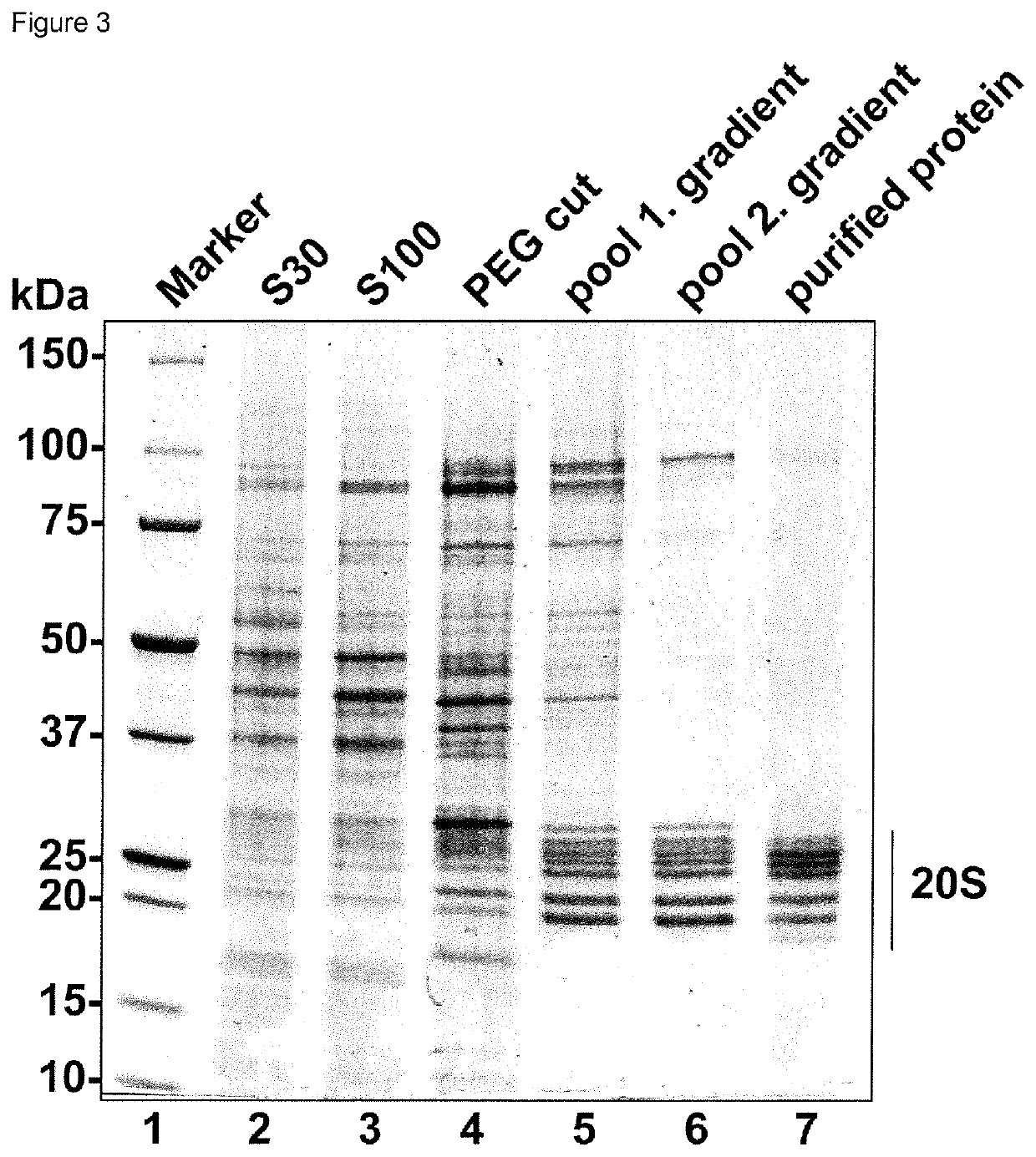Method for the purification of biological macromolecular complexes
a macromolecular complex and purification method technology, applied in the field of biological macromolecular complex purification, can solve the problems of complex structure, relative instability of said structure, and difficulty in structure determination and correct formation of macromolecular assembly
- Summary
- Abstract
- Description
- Claims
- Application Information
AI Technical Summary
Benefits of technology
Problems solved by technology
Method used
Image
Examples
examples
[0087]Materials and Methods:
[0088]Materials
[0089]Standard chemicals were obtained from Sigma Aldrich (Taufkirchen, Germany). The proteasome inhibitors Oprozomib, Epoxomicin and Dihydroeponemycin were purchased from ApexBio (Houston, USA), MLN9708 and Bortezomib were obtained from Selleck Chemicals (Munich, Germany) and Z-LLY-Ketoaldehyde from Bachem (Bubendorf, Switzerland), and were resuspended in DMSO at 100 mM concentration. Detergents were obtained from Anatrace (Maumee, USA), crystallization plates from Hampton Research (Aliso Viejo, USA), Litholoops from Molecular Dimensions (Suffolk, UK) and Jena Bioscience (Jena, Germany).
[0090]Table S1: Buffers for protein purification, crystallization, crystal stabilization, crystal dehydration and enzymatic assays
[0091]Purification buffer: 0.05 M BisTris pH 6.5, 0.05 M KCl, 0.01 M MgCl2, 0.01 M β-Glycerophosphate
[0092]Crystallization buffer: 0.1 M BisTris pH 6.5, 0.2 M MgCl2, 10% (w / v) PEG3350
[0093]Crystal stabilization buffer: 0.1 M BisT...
PUM
 Login to View More
Login to View More Abstract
Description
Claims
Application Information
 Login to View More
Login to View More - R&D
- Intellectual Property
- Life Sciences
- Materials
- Tech Scout
- Unparalleled Data Quality
- Higher Quality Content
- 60% Fewer Hallucinations
Browse by: Latest US Patents, China's latest patents, Technical Efficacy Thesaurus, Application Domain, Technology Topic, Popular Technical Reports.
© 2025 PatSnap. All rights reserved.Legal|Privacy policy|Modern Slavery Act Transparency Statement|Sitemap|About US| Contact US: help@patsnap.com



